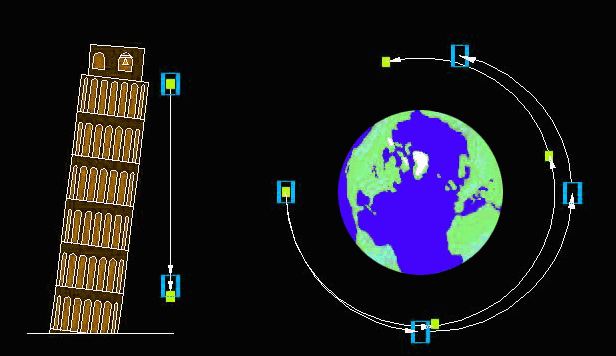Relativitaet auf dem Pruefstand
STEP: A modern experiment of free fall

The STEP experiment is conceptually a modern version of Galileo's Free-Fall Experiment, in which Galileo is said to have dropped two weights from the Leaning Tower of Pisa to demonstrate that they fall at the same rate. Any difference in the ratio of inertial to passive gravitational mass of the weights results in a difference in the rate of fall. In STEP, the masses are in free fall in an orbit around the Earth, and if there is a violation of the Equivalence Principle they tend to follow slightly different orbits. The orbiting masses fall all the way around the Earth and never strike the ground, so that any small difference in the rate of fall can build a large displacement. STEP is designed to allow measuring displacements as small as 10-13 centimeter.
[ Sitemap ]
[ info ] This website was created by the MPI for the History of Science.
 Scene
Scene


 1st Slide
1st Slide
 Branching Point
Branching Point
 Module: Relativitaet auf dem Pruefstand
Module: Relativitaet auf dem Pruefstand Sequence: Start
Sequence: Start Slide:
Slide:  Branching Point: Putting relativity to the test - Was Einstein right ?
Branching Point: Putting relativity to the test - Was Einstein right ? Back
Back

